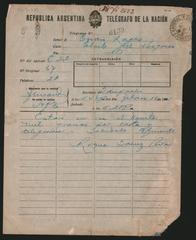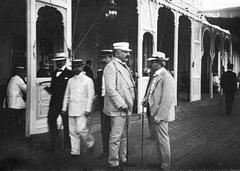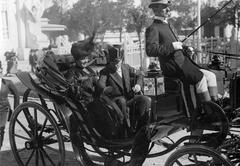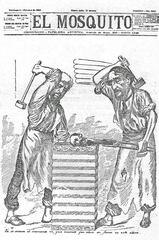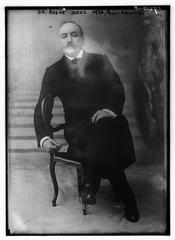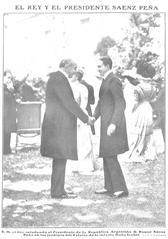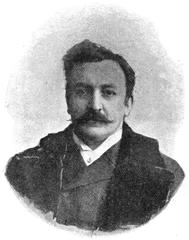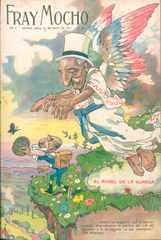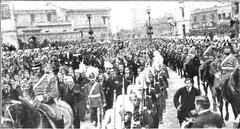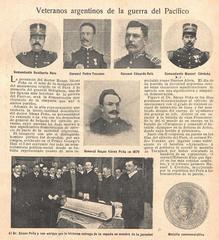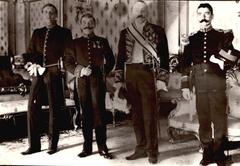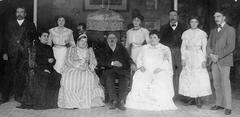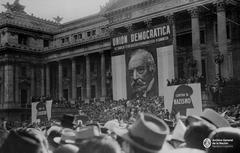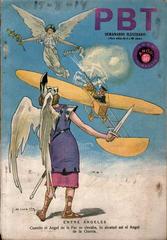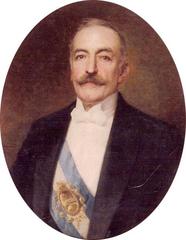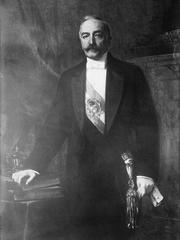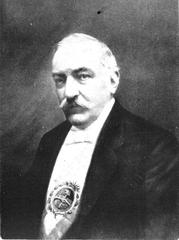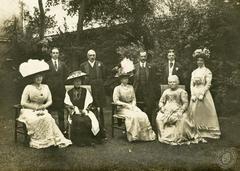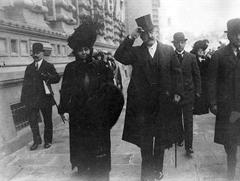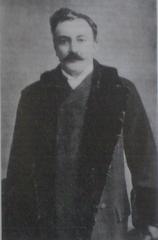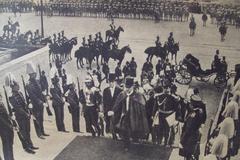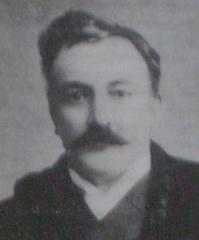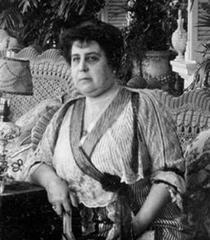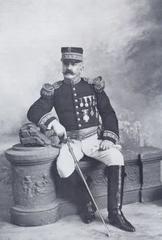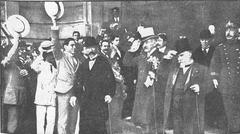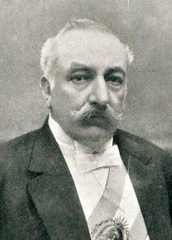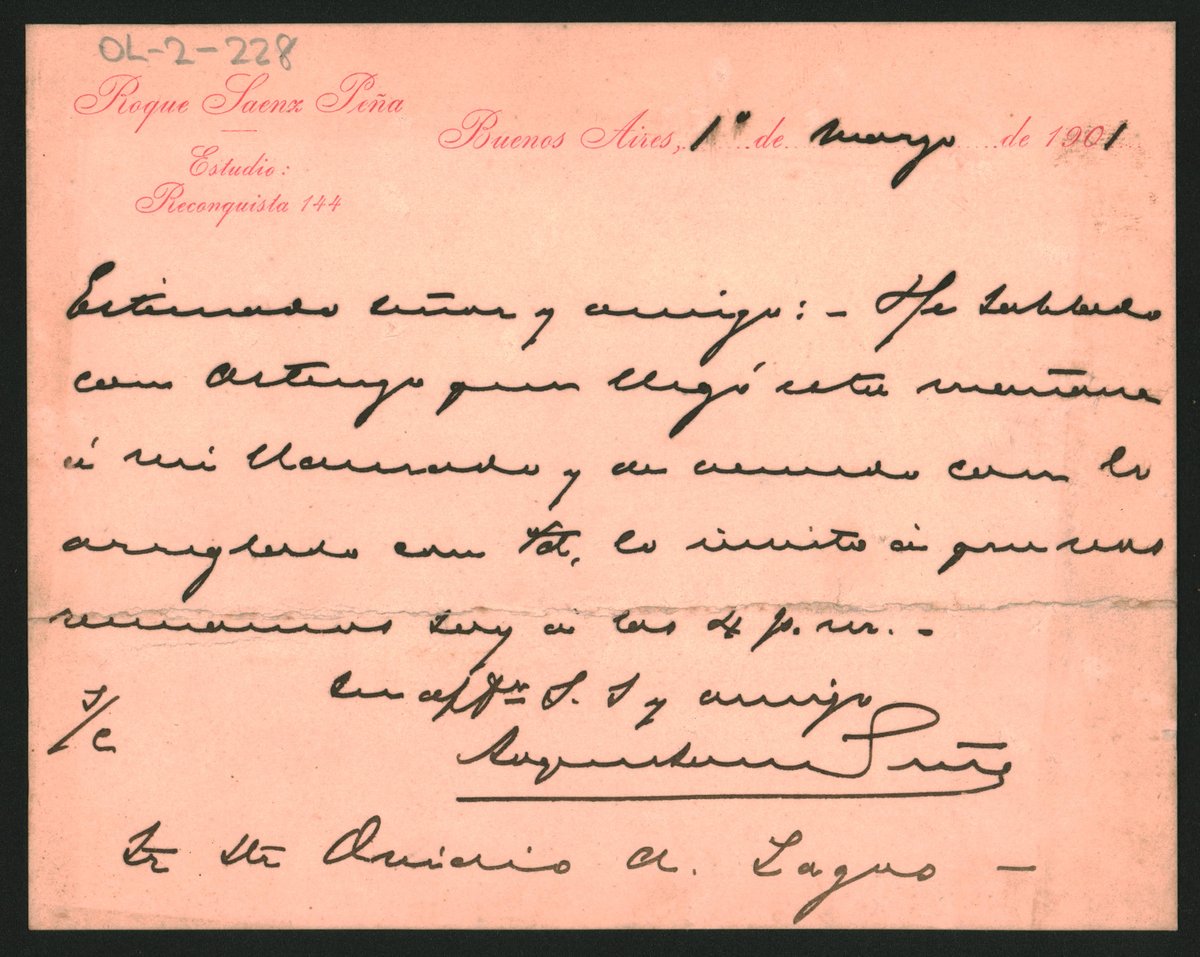
Roque Sáenz-Peña Buenos Aires: Visiting Hours, Tickets, and Historical Sites Guide
Date: 14/06/2025
Introduction
Avenida Roque Sáenz Peña—commonly known as Diagonal Norte—is one of Buenos Aires’ most emblematic avenues. Stretching diagonally through the city’s grid, it links two of the capital’s most significant points: Plaza de Mayo and the iconic Obelisco at Plaza de la República. Named after President Roque Sáenz Peña, the avenue is a tribute to Argentina’s democratic evolution—his 1912 Sáenz Peña Law was pivotal in establishing universal, secret, and compulsory male suffrage. Today, Diagonal Norte stands as a symbol of urban modernization, democratic ideals, and Buenos Aires’ rich cultural tapestry. Visitors can expect a vibrant blend of architectural beauty, historical depth, and dynamic city life, all easily accessible and open to everyone (Trek Zone, Wikipedia, Turismo Buenos Aires).
Table of Contents
- Introduction
- Historical Background and Political Significance
- Architectural Highlights and Urban Design
- Visiting Information
- Nearby Attractions and Experiences
- Social and Cultural Significance
- Practical Travel Tips
- Frequently Asked Questions (FAQ)
- Conclusion
- References
Historical Background and Political Significance
Avenida Roque Sáenz Peña was conceived in the early 20th century as part of Buenos Aires’ modernization, inspired by Parisian urban reforms. Its diagonal design was meant to efficiently connect the city’s executive (Casa Rosada), legislative (Congreso), and judicial (Palacio de Justicia) centers. Named after President Roque Sáenz Peña (1851–1914), the avenue honors his transformative electoral reform: the Sáenz Peña Law of 1912, which established fair, secret, and compulsory voting for men over 18, marking a turning point in Argentina’s democratic history (Trek Zone, Wikipedia).
The avenue’s inauguration in 1913 was a testament to Buenos Aires’ ambitions to become a modern, cosmopolitan city. Diagonal Norte quickly became a civic artery—hosting demonstrations, parades, and public celebrations that reflected the evolving national identity.
Architectural Highlights and Urban Design
Diagonal Norte is renowned for its architectural diversity and urban coherence. The avenue is lined with neoclassical, Art Deco, Beaux-Arts, and Rationalist buildings, many dating from the early 20th century. Notable landmarks include:
- Edificio Menéndez Behety: A prime example of early commercial architecture.
- Edificio La Unión: Featuring an elegant, historic façade.
- Edificio Sud América (1926): Showcasing Art Deco influences.
- Catedral Metropolitana de Buenos Aires: A neoclassical cathedral near Plaza de Mayo and former seat of Pope Francis.
- Palacio de Justicia: The Supreme Court’s stately headquarters.
- Obelisco de Buenos Aires: The city’s most famous monument, erected in 1936, marking the 400th anniversary of Buenos Aires.
The avenue’s diagonal orientation creates unique urban vistas and triangular plazas, breaking the standard city grid. A consistent cornice line at 67.5 meters—matching the Obelisco’s height—gives the street a unified appearance (amigosviajeros).
Recent renovations have restored original lamp posts, improved sidewalks, and added seating, making the avenue more pedestrian-friendly and visually appealing (Rexby).
Visiting Information
Hours and Tickets
- Avenida Roque Sáenz Peña: Open 24/7; free to walk and explore.
- Key Landmarks:
- Casa Rosada: Free guided tours, Monday–Friday, 10:00 AM to 6:00 PM. Advance booking required (Casa Rosada).
- Teatro Colón: Guided tours daily, 9:00 AM to 5:00 PM; tickets required (Teatro Colón).
- Obelisco: Outdoor monument, accessible at all times.
Getting There
- Public Transport: Accessible via Subte lines B, C, and D. Main stations: Diagonal Norte, Catedral, 9 de Julio, Tribunales.
- Bus: Numerous lines serve the area (Buenos Aires Transport).
- On Foot: The avenue is highly walkable, with wide sidewalks and pedestrianized areas.
- Hop-On Hop-Off Tours: Many city tours include Diagonal Norte as a highlight (Hop-On Hop-Off Bus Tours).
Accessibility
Diagonal Norte is equipped with wheelchair-accessible sidewalks, ramps, and curb cuts. Major attractions along the avenue are generally accessible to visitors with mobility needs.
Nearby Attractions and Experiences
- Plaza de Mayo: Political heart of the city, home to the Casa Rosada.
- Plaza de la República & Obelisco: Central monument and gathering point.
- Palacio de Justicia: Supreme Court and legal landmark.
- Teatro Colón: Renowned opera house nearby.
- Calle Florida: Bustling pedestrian shopping street.
- Plaza Lavalle: Green space near the Supreme Court and the Teatro Colón.
Numerous cafés, bakeries, parrillas, and shops surround the avenue, offering a taste of local cuisine and daily life.
Social and Cultural Significance
Diagonal Norte is not just a transportation route, but a living stage for Buenos Aires’ culture. The avenue has witnessed political rallies, historic demonstrations, and jubilant celebrations—especially at the Obelisco during major sports victories. It is where locals, or porteños, gather to share mate, debate in cafés, and dance tango in public spaces (Worldly Adventurer, Guruwalk).
The avenue’s commercial importance is underscored by its banks, corporate offices, luxury hotels (e.g., NH Latino), and proximity to vibrant shopping districts (Touristlink).
Practical Travel Tips
- When to Visit: Spring (Oct–Nov) and autumn (Feb–Apr) offer mild weather and blooming jacaranda trees (Secrets of Buenos Aires).
- Safety: The area is generally safe, but remain vigilant against pickpocketing, especially in crowded spots and public transit (The Broke Backpacker).
- Currency: Argentine peso (ARS) is used. Carry cash for small purchases; larger venues accept credit cards.
- Language: Spanish is official, but English is commonly spoken in tourist areas.
- Etiquette: Smart-casual attire is recommended; a handshake or cheek kiss is the usual greeting.
- Connectivity: Free Wi-Fi in many cafés and hotels; consider a local SIM or eSIM.
- Accommodation: Hotels and hostels are plentiful; staying nearby ensures easy access but may be busy or noisy during peak times (Solsalute).
- Amenities: Public restrooms are available in major attractions; many venues are wheelchair-accessible.
Frequently Asked Questions (FAQ)
Q: Is there an entry fee for Avenida Roque Sáenz Peña?
A: No, the avenue is a public street and free to explore.
Q: What are the visiting hours for Diagonal Norte?
A: Open 24/7 as a public thoroughfare.
Q: How do I get there using public transport?
A: Use Subte lines B, C, or D; main stations include Diagonal Norte, Catedral, and 9 de Julio.
Q: Are guided tours available?
A: Yes, many city walking tours and hop-on hop-off bus tours feature Diagonal Norte and nearby landmarks.
Q: Is the avenue accessible for wheelchairs?
A: Yes, with wide sidewalks and curb cuts, and most attractions are accessible.
Q: What’s the best time to visit?
A: Spring and autumn for pleasant weather and vibrant city life.
Conclusion
Avenida Roque Sáenz Peña (Diagonal Norte) is a vibrant embodiment of Buenos Aires’ democratic spirit, architectural legacy, and cultural dynamism. Its strategic location, historical significance, and lively urban atmosphere make it a must-visit for travelers seeking to immerse themselves in the heart of Argentina’s capital. Whether you’re drawn by the avenue’s grand architecture, its role in national history, or simply wish to experience the pulse of Buenos Aires, Diagonal Norte promises an enriching journey.
Enhance your visit by downloading the Audiala app for offline maps, audio guides, and real-time updates. Explore related articles for more on Buenos Aires’ historical sites and attractions. For the latest information, consult official tourism websites and stay connected with us on social media.
References
- Avenida Roque Sáenz Peña: Visiting Guide and Historical Overview of a Buenos Aires Landmark (Trek Zone)
- Avenida Presidente Roque Sáenz Peña (Diagonal Norte) Visiting Guide: History, Architecture, and Practical Tips (Wikipedia)
- Avenida Roque Sáenz Peña (Diagonal Norte) Visiting Hours, Tickets, and Historical Significance in Buenos Aires (Turismo Buenos Aires)
- Visiting Avenida Roque Sáenz Peña in Buenos Aires: Hours, Tickets, and Essential Travel Tips (Official Buenos Aires Transport Site)
- Hop-On Hop-Off Bus Tours
- amigosviajeros
- Rexby
- Hisour
- Secrets of Buenos Aires
- The Broke Backpacker
- Solsalute
- Touristlink
- Worldly Adventurer
- Guruwalk
- Casa Rosada
- Teatro Colón

